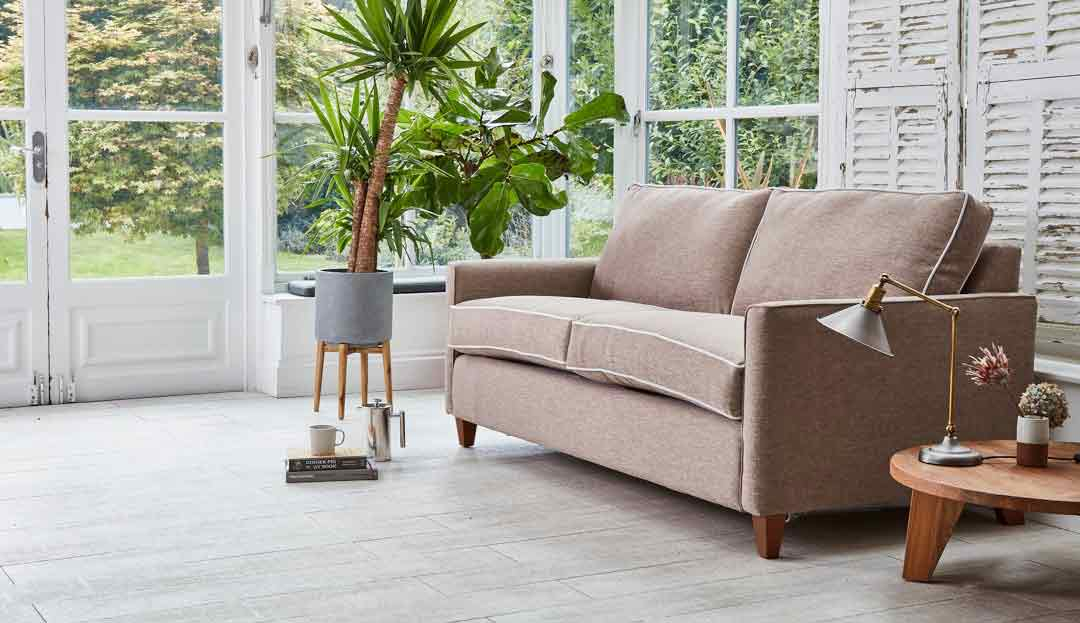Eco-Friendly Sofas for Better Sustainable Living
In the past few decades, conversations around climate change and the environment are ever-increasing, and rightfully so. Change is happening, across businesses and in homes around the world, with a real increase in consciousness around the carbon footprint of products, sustainable materials and what we can all do to help and start to make a difference.
And it’s not just about using less water and recycling, it’s about the products you buy. You can now look at how the materials have been sourced, what their carbon footprint is and what their green plans are as a business moving forwards. From clothes to paint and shoes to furniture, there is now an eco-friendly option at your disposal.
If you’re looking to buy a new sofa with sustainability in mind, here’s our guide to eco-friendly sofas for better sustainable living.
What Makes a Couch Eco-Friendly?
Various materials are used when making a sofa so when looking for a sustainable sofa, do some research into the materials it has been built with. Let’s start with the wooden frames used to build a sofa. At Darlings, the wood for our frames is sourced from responsibly managed forests. This means that the forest is being monitored to ensure damage to both wildlife and the ecosystem is prevented and that new trees are encouraged to grow in place of those that are harvested.
When looking for an eco-friendly sofa, look for the FSC logo, which is the Forest Stewardship Council – a not-for-profit organisation that promotes responsible management of the world’s forests. Any wood that has been sourced from a sustainable forest will have an FSC logo stamped on it. For inspiration, look at our Starling range – its wood frame is made of sustainable teak and features a rattan back.
It’s All Material
As well as looking at the wood used in your sofa, you can also look at the upholstery to find out if it is a non-toxic sofa. Linen and wool are both ideal for an eco-friendly couch and offer comfy living at the same time! Not only that but using natural shades can contribute to a biophilic design in your living space, where the focus is on your connection to the outside environment.
As well as natural materials such as wool and linen, we also offer a range of recycled fabrics, which we are looking to increase in the next few years. We also source all our feathers and down from certified suppliers. If you’d like to know which of our fabrics are recycled, ask one of our friendly team, who will only be so happy to talk you through the different options.
If you are looking for an eco-leather sofa, there is plenty of research you can do to check the leather you’re choosing for your sofa has been sustainably sourced. A very durable material, the key to sustainable leather is its traceability and the quality of the tannery it has come from. Does that tannery recycle its water and chemicals? The processes used are as important as the result. There are many important associations that audit tanneries and offer a lot of information about leather, including the Leather Working Group and the Sustainable Leather Foundation.
At Darlings, we pride ourselves not just on the quality of our products but on their traceability too. With all our leathers, we have full traceability right back to the individual farm they came from. Sustainability and environmental responsibility are key focuses for our tanneries, who are working with the Sustainable Leather Foundation (whose aim is to support its stakeholders to learn, improve and protect).
To look at our range of leather sofas here.
Carbon Footprint
As well as looking into the materials used to build your sofa, you can also look at its carbon footprint. A carbon footprint is the total amount of greenhouse gases (including carbon dioxide and methane) that are generated by our (or a business’s) actions.
Transportation creates the largest percentage of greenhouse gas emissions (responsible for 27% of greenhouse gas emissions in 2020) and so when looking at furniture, look at where it’s come from and how big its carbon footprint will be.
Our carbon footprint has been a key priority for us and we’re proud to share that by the end of this year, all Darlings’ products will be made here in the UK, significantly reducing our footprint.
Reduce, Reuse, Recycle
You’ve now looked at the materials used in making your sofa and the journey it’s taken to get to the warehouse. The final step is how it is packaged – how much plastic has been used and is it recycled plastic.
On top of that, think about your old sofa, does it have some life left in it? Rather than simply throwing it away, could it enjoy life elsewhere? There are plenty of charitable donations who will gladly take furniture off your hands, and there’s also the option of listing it online, on sites such as Gumtree and Preloved, where not only will some people be glad to take it off your hands, but they’ll also come and collect it too!
Once you’ve got used to researching eco-friendly couches, that search can extend to all your furniture, including:
- sustainable sofa bed.
- a bed.
- a dining table.
- an accent chair.
- or some simple scatter cushions!
The more sustainable furniture you bring into your home, the more you reduce your carbon footprint. And the more people who prioritise sustainability, the more businesses will realise that changes are needed to make a difference and meet the demands of their customers.
At Darlings, sustainability is becoming ever-more important, and we are committed to working towards a more sustainable future. The work has already started but we have ambitions to go a lot further.
Want to know more? Have a look at some the principles of sustainable interior design.

